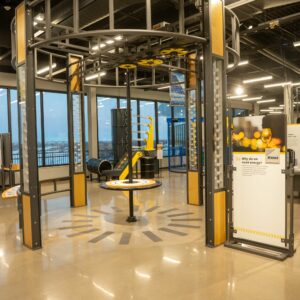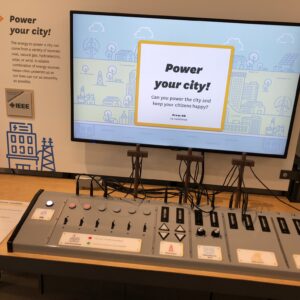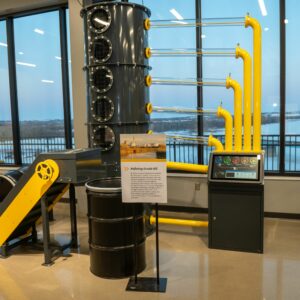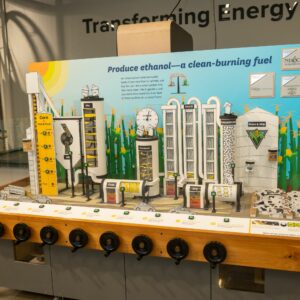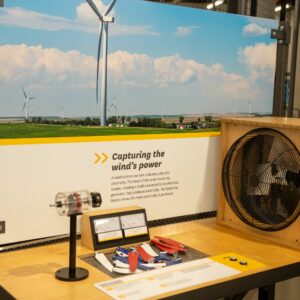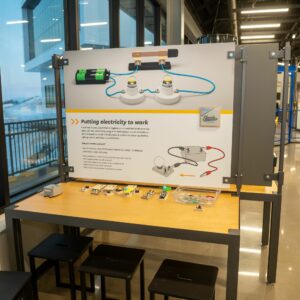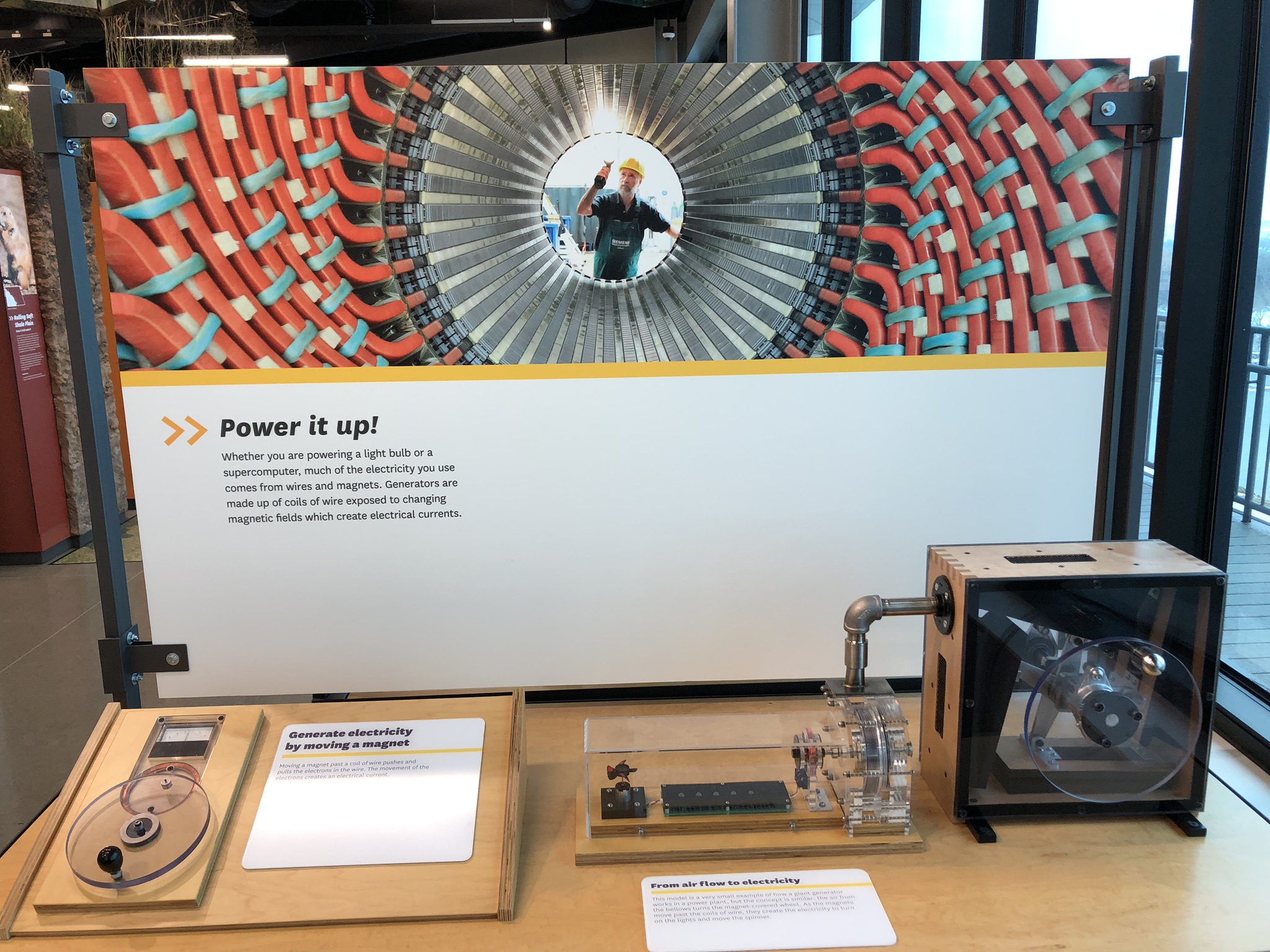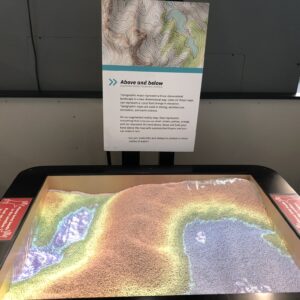Energy is what keeps things happening, around the house and throughout the universe. It’s in the fuel we burn to generate electricity, heat our homes, and power our planes, trains, cars, and boats. It’s in the power we harness from wind and water. And ultimately, our biggest source of energy is the sun. Access to energy makes our lives easier. Imagine how much longer it would take to do everything without energy from fossil fuels, solar and wind power. Without them, you would spend most of your energy fueling your life. The experiences in Transforming Energy involve visitors in a range of energy-related subjects, processes, and concepts from the physics of energy to exploration and generation of traditional and alternative energy sources.
Why We Need Energy
Sponsored by Inland Oil & Gas Corporation
Energy = work. The more difficult the activity, the more energy needed. Our human-powered energy can accomplish this work in very small amounts. We need to tap into more powerful resources to maintain the comfort and ease of living to which we’ve grown accustomed. In this full-body experience visitors turn a horizontal wheel connected to a generator. Several visitors can work together to generate enough power to light up the tower!
Power Your City
Sponsored by Institute of Electrical and Electronics Engineers
Visitors are challenged to balance the supply and demand for energy in a simulated community. Operators respond to demands for power from homes, schools, and businesses by selecting the amount of each power source going into a virtual system (grid).
Oil Refinery
This exhibit demonstrates how crude oil is refined into gasoline and other fuels by showing the distillation of liquid into multiple components represented by different colored balls. As visitors turn the wheel that operates the conveyer belt, the color of each ball is detected and a pneumatic system sends the balls (representing the different liquids) down the right channel with heavier oils coming out at the base of the tower and lighter oils and gas coming out at the top of the tower.
Pump Jack and Gas Capture
Pump Jack Sponsored by Hess Corporation. Gas Capture Sponsored by Chord Energy.
Visitors pump the pump jack to fill an acrylic tank with oil (dyed water). Once there is oil in the tank, the associated gas field is ‘switched on’ and visitors collect gas from the holes in the floor. They will need to work together using hoses to collect as much gas as they can. Once the pump jack stops, they have to pump oil again to release the gas.
Ethanol Production
Sponsored by ND Ethanol Council, Renewable Energy Council – Industrial Commission of ND, and Ethanol Industry Partners
This exhibit reveals each step in the process of transforming corn into ethanol and distillers grain. The final stage fuels race cars and feeds cows.
Wind Generator
Visitors make design changes to a wind turbine in an effort to generate the most efficient power. They select from various blade shapes, choose the number of blades and the blade pitch, measure the power their design generates, and experiment to improve its performance.
Circuit Blocks
Sponsored by Skeels Electric
Using a set of blocks that hold switches, lights, and buzzers, visitors assemble circuits that accomplish specific tasks. They can build circuits using available instruction cards or they can make up their own circuit challenges.
Solar Car
Solar energy, usually used to heat water or make electricity for lighting or to charge batteries, is used to run a small model car. Visitors are challenged to keep the light focused on the solar panel and race the car across the finish line before time runs out.
Power It Up
Visitors learn how a giant generator works in a power plant. The air from a bellows turns a magnet-covered wheel. As the magnets move past coils of wire, they create electricity to turn on LED lights and move the spinner.
Augmented Reality Table
Visitors use the plastic pellet-filled table as a way to explore different layers of earth, including the aquifer. They use their hands to move layers of pellets while a projector superimposes topographic lines and elevation colors on the surface.
Messaging From the Drill Bit
Sponsored by NESET
Oil drillers use a coded pulse to send data from the drill bit up through a fluid-filled pipe. At the surface, the information helps the drill team know if they need to change course or if they’re right on target. Visitors will send and decode messages transmitted by pulses through a liquid-filled tube in this simulated experience.
